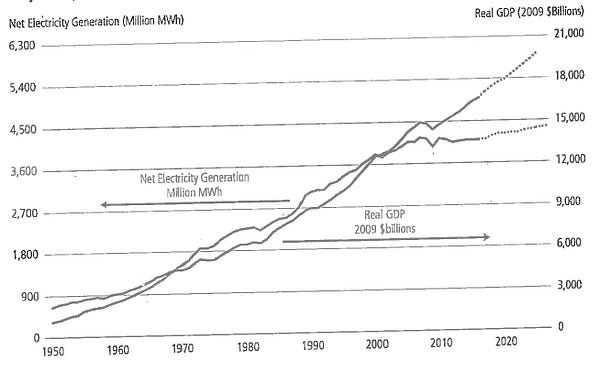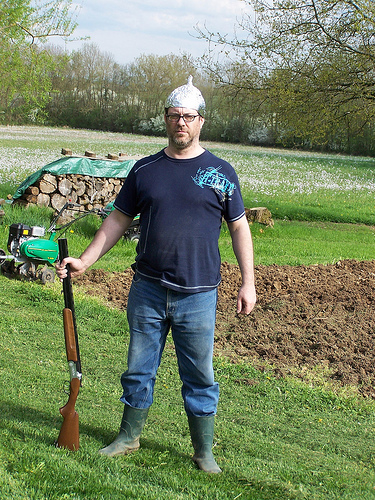Page added on July 18, 2017
Coal and Nuclear are Uneconomic — More Bombshells from Perry’s Draft Grid Study
On Saturday, we reported that a leaked draft of Energy Secretary Rick Perry’s grid study obtained by Bloomberg debunks his attack on renewable energy.
ThinkProgress has now obtained a copy of that draft, and it has many more surprises — or, rather, findings that are fairly well known to energy experts but may come as an unpleasant surprise to Perry and the White House. For instance, a large fraction of America’s aging fleet of coal and nuclear plants are simply not economic to operate anymore.
The July draft, which ThinkProgress received from multiple sources, is here, so the public will be able to compare the final “politically-approved” version with the draft prepared by Department of Energy (DOE) staff. It is widely feared Perry’s team of Trump appointees will simply erase the the study’s inconvenient truths before it final report is released to the public.
The release of the study has been delayed several weeks — and the findings in the draft might explain why. The study was specifically requested to back up Perry’s claims that EPA regulations, along with renewable power sources like solar and wind power, were undermining the U.S. electric grid’s reliability by forcing the premature closure of “baseload” (24–7) power sources like coal and nuclear.
But the leaked July draft concludes the grid is as reliable than ever.
As for baseload plant retirements, factors like environmental regulations and renewable energy subsidies “played minor roles compared to the long-standing drop in electricity demand relative to previous expectation and years of low electric prices driven by high natural gas availability.”
The draft report finds that since 2002, “most baseload power plant retirements have been the victims of overcapacity and relatively high operating cost but often reflect the advanced age of the retiring plants.”
Overcapacity is a major cause of the turmoil in electricity markets. The report explains that because the grown in electricity demand has flattened since 2008, it is harder for “less competitive plants” to survive.
Between 1970 and 2005, “total US electricity generation grew steadily at a compound annual growth rate (CAGR) of 2.7 percent.” But since then, the rate has fallen to 0.05 percent — “even as the nation’s gross domestic product grew by 1.3 percent per year over the same period” (see chart), the draft report says.
 CREDIT: July draft of DOE grid report
CREDIT: July draft of DOE grid report
It’s increasingly clear that, for the foreseeable future, gas prices will stay low, demand growth will stay lower (thanks in large part to energy efficiency), and renewables will keep getting cheaper.
And it doesn’t make sense to keep an uneconomic plant running when you know it’s going to keep losing money.
In the case of nuclear power, the study notes that vast majority of the plant closure announcements blame plant retirement on “unfavorable market conditions.” And the “most unfavorable condition is that the marginal cost of generation for many nuclear plants is higher than the cost of most other generators in the market.”
 Marginal cost estimates for major U.S. generators. Combined cycle (CC) gas plants are very efficient whereas combustion turbine (CT) plants are inefficient, but cheaper to build. CREDIT: Draft DOE report
Marginal cost estimates for major U.S. generators. Combined cycle (CC) gas plants are very efficient whereas combustion turbine (CT) plants are inefficient, but cheaper to build. CREDIT: Draft DOE report
The bottom line is that “as long as natural gas prices stay down and there is an oversupply of energy in many hours of the day and year [because of zero-marginal-cost renewable power] the typical nuclear plant will lose money on every kWh produced, and not be able to make it up on volume.”
As an aside, if existing nuclear power plants are unprofitable, it should be pretty obvious that building a new nuclear power plant, which costs many billions of dollars — makes no economic sense at all.
Similarly, coal is also hurt by its high marginal cost: “[Coal] plants that have retired are old and inefficient units that were not recovering their operations and fuel costs, much less capital cost recovery.”
Uneconomic coal plants are run less often. The DOE draft reports that a detailed analysis found “about 70 percent of the [coal] plants that have retired between 2010 and 2016 had a capacity factor of less than 50 percent in the year prior to retirement.” That is, averaged over the whole year, they were running at half of their full power rating.
The DOE staff also explain that not only is the reliability of grid continuing to improve even as we add more and more renewables, but “High levels of wind penetration can be integrated into the grid without harming reliability.” And since renewables keep dropping in price, we can expect more and more penetration.
It’s really no surprise that DOE staff would conclude renewables are not threatening grid reliability. After all, many countries around the world, such as Germany, have integrated far higher percentages of solar and wind than we have, while maintaining high reliability.
The only surprise remaining is how many of these findings Trump’s political appointees will erase.
11 Comments on "Coal and Nuclear are Uneconomic — More Bombshells from Perry’s Draft Grid Study"


baha on Tue, 18th Jul 2017 5:09 pm
Ha ha, $0 marginal cost for solar…does that mean it is free? Only when the sun is shining 🙂
Cloggie on Tue, 18th Jul 2017 5:27 pm
American energy policies couldn’t be better.
From a European point of view that is.
Jerome Purtzer on Tue, 18th Jul 2017 6:54 pm
Perry knows about as much about running the Department of Energy as Trump knows about running the Federal Government as Jarod Knows about foreign affairs as Ivanka Knows about advising Presidents of the United States as Dr. Ben knows about housing and urban development. Truly a Confederacy of Dunces.
deadlykillerbeaz on Tue, 18th Jul 2017 7:10 pm
Think Regressive is usually full of sh!t right up to their ears.
Goes without saying.
They still are.
Anonymouse on Tue, 18th Jul 2017 10:08 pm
Unless you have been living in a cave all your life, there is no reason not to know that centralized amerikan energy cartels, would not exist as they are currently configured, w/o massive corporate welfare. ALL FF, not just coal and nuclear especially, are un-economic w/o the myriad overt and covert subsides they receive. W/O state support, ‘civilian’ nuclear would never have gotten past a research plant or two. W/O corporate welfare, coal would still be sold and used, it just have been a lot more expensive to utilize.
Never hurts to talk about the topic under-reported, under-reported as it is, in the ‘free press’.
Makati1 on Tue, 18th Jul 2017 11:09 pm
Anon, of course you are correct. Without the need for nuclear bomb material, nuke plants would never have existed. They are huge money pits at any reasonable level of electric prices.
Coal is not much better, as the government has to overlook the damage done to the land where it is mined, and the huge pollution it causes at all levels, plus clean up the mess after at taxpayer’s expense. Again too expensive to waste if not subsidized.
And oil, that too would not exist without the huge subsidies and wavers of every kind of environmental common sense possible. Including the zero interest rates that make borrowing billions to keep operating all of the energy companies in the U$ at the expense of the citizens. The size of the capitalist financial bubble is fast approaching the size of the sun. When it pops, it will knock the planet out of its orbit. LMAO
AM on Wed, 19th Jul 2017 1:09 pm
RIP professor Eugene Mallove. I stumbled upon you too late. I’ll comb over everything you said hoping to spot an opening in low temp reactions.
Antius on Wed, 19th Jul 2017 2:49 pm
Interesting link that lays bare the enormous cost escalation in nuclear power in the western world:
http://www.sciencedirect.com/science/article/pii/S0301421516300106/pdfft?md5=5064d0592c163387693ca1049493c504&pid=1-s2.0-S0301421516300106-main.pdf
After 3 mile island and Chernobyl, western regulators pushed up build times and costs through the roof, without meaningfully improving safety.
Kenz300 on Wed, 19th Jul 2017 3:54 pm
Wind and solar with battery storage are safer, cleaner and cheaper.
Cheaper WINS !
JJHMAN on Thu, 20th Jul 2017 1:20 pm
Antius:
I worked in the nuclear industry in the 1970s. I doubt it was economic then without govt handouts. The company I worked for routinely got $70 million each year for “base programs”, basically free money for ill-defined research. At the same time we had a huge department working on fast breeders that we knew would never see the light of day and a federally funded fusion program that I believe is still being funded 40 years later. The one reactor that we built during my 8 years there received free weapons-grade uranium for it’s U-Th fuel cycle. Yes, that’s right, we built Thorium fueled reactors in the sixties and seventies.
Kenz300 on Sat, 22nd Jul 2017 10:25 am
The cost of dismantling nuclear power plants and storing the waste will be staggering. Who will pay for it FOREVER.